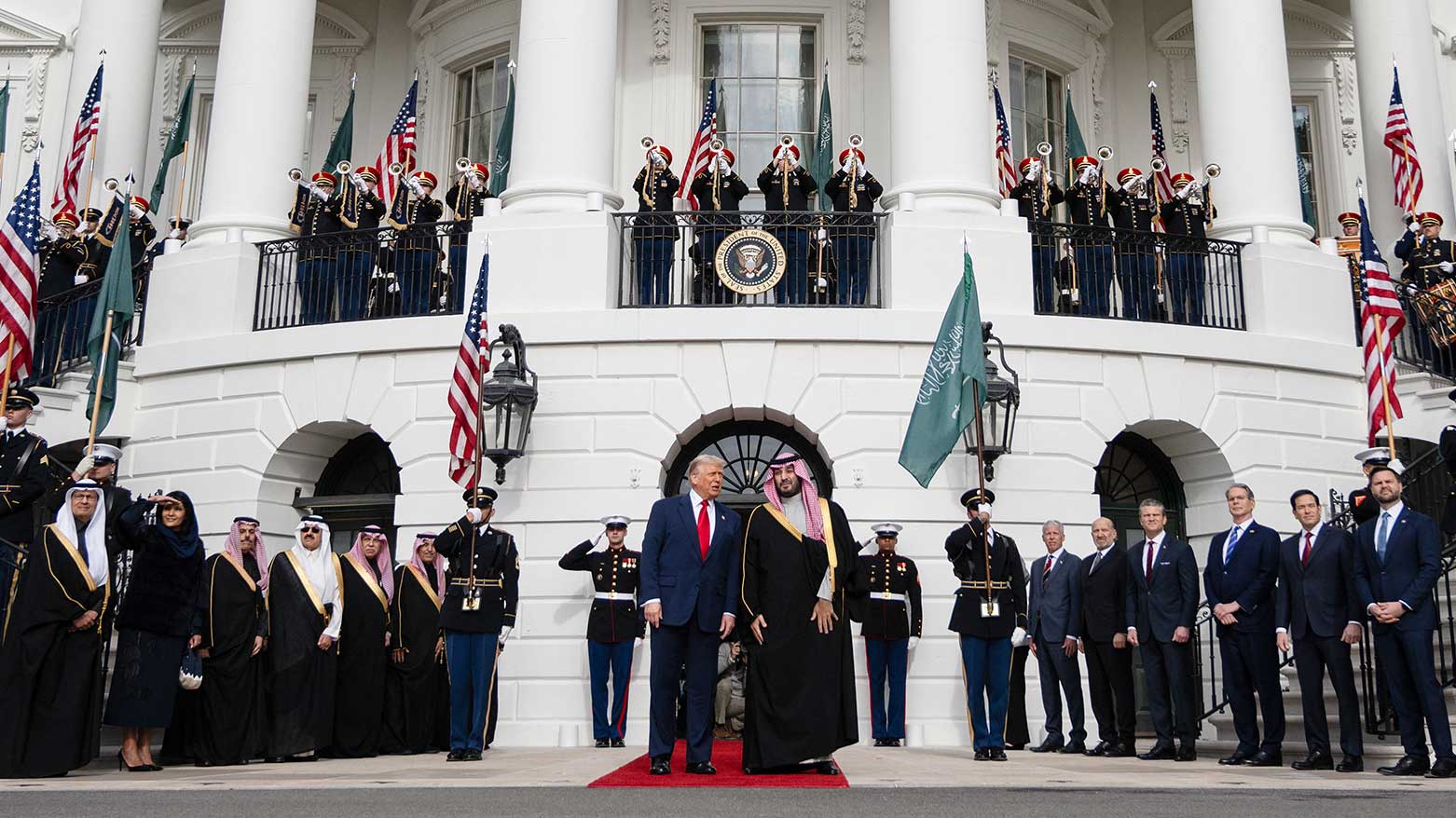
Tara Shwan
Writer
A Calculated Comeback: What Mohammed bin Salman’s White House Visit Really Means
Beneath the choreography of official meetings lies a strategic agenda that ties together security, economics, regional diplomacy, and the crown prince’s own ambitions for his legacy.

By Tara Shwan
The return of Saudi Crown Prince Mohammed bin Salman (MBS) to the White House is more than a diplomatic formality, it marks a bold reassertion of his international standing and a ruthless recalibration of U.S.–Saudi relations. Beneath the choreography of official meetings lies a strategic agenda that ties together security, economics, regional diplomacy, and the crown prince’s own ambitions for his legacy.
At the core of the visit are the sweeping strategic stakes. The crown prince is pressing for deeper defense cooperation: advanced weapons, tighter intelligence ties, and possibly even a formal security guarantee. Reports suggest Saudi Arabia is betting on Washington’s promises to shore up its security amid growing regional turbulence.
There is even talk of a pact resembling the recent U.S.–Qatar defense agreement, a move that could significantly reshape Riyadh’s strategic position and potentially alter the Gulf’s balance of power. If the United States commits to defending Saudi Arabia against external threats, it would mark a major shift in the region’s security architecture.
Equally pivotal is the economic dimension. Beyond arms deals, this trip is anchored in money, an enormous surge of Saudi investment into the United States. MBS is reportedly raising his investment pledge from $600 billion to nearly $1 trillion, targeting future-facing sectors such as artificial intelligence, rare earth materials, semiconductors, and possibly even civilian nuclear cooperation. This is not an act of generosity but a calculated economic gamble.
Saudi Arabia needs to diversify beyond oil, while the U.S. seeks capital, technological partnerships, and long-term geopolitical alignment. For MBS, these investments serve to accelerate Saudi Arabia’s transformation under Vision 2030 while deepening his leverage in Washington.
The visit also plays into a wider Middle East chessboard. MBS is positioning Saudi Arabia not just as a bilateral partner to the U.S. but as a regional powerbroker. Reports suggest he is signaling a willingness to engage more actively on Gaza, maintain a degree of diplomatic engagement with Iran, and potentially revisit normalization conversations with Israel.
Yet his demands remain firm: any normalization must be accompanied by genuine movement toward a Palestinian state. This stance underscores Saudi Arabia’s attempt to balance its modernizing image with its traditional political commitments, asserting influence without relinquishing its longstanding regional principles.
Yet the triumphant tone of the visit does not entirely escape controversy. MBS’s return comes with lingering concerns in Washington about human rights issues and the kingdom’s political climate factors that continue to complicate how some view the deepening partnership. Even so, these concerns appear increasingly overshadowed by strategic priorities, as both sides emphasize stability, investment, and shared geopolitical interests over points of tension.
For Washington, doubling down on MBS is a calculated risk. Strengthened U.S.–Saudi ties promise economic benefits and increased leverage in a volatile region, but they also risk domestic backlash and deeper entanglement in Saudi Arabia’s strategic ambitions.
A defense pact, if agreed upon, comes with obligations and uncertainties: Would the U.S. truly respond militarily if Saudi Arabia were attacked? What constraints or commitments would be imposed? And how would such a pact reshape U.S. relationships with other regional players, including Iran, Israel, and Saudi Arabia’s Gulf rivals?
Ultimately, this visit functions as a wider legacy gamble for MBS. He is betting that his ambitious vision for Saudi Arabia, his embrace of technology, his pursuit of regional leadership, and his rebranding of the kingdom on the global stage will define his era. But the risks are significant.
Economic volatility, geopolitical missteps, or diplomatic backlash could unravel the carefully constructed narrative he is trying to cement.
In the end, Mohammed bin Salman’s return to the White House is a masterstroke of diplomacy and symbolism. It signals that he is back, more confident, more influential, and more determined to shape the world on his terms. Yet behind the spectacle lies a complex web of compromises, strategic wagers, and shifting priorities.
For the United States, the visit highlights a familiar reality in foreign policy: stability, investment, and influence continue to outweigh points of friction. For Saudi Arabia, the moment is both triumphant and precarious, a high stakes gamble whose true outcome will be revealed not now, but over time.
The views expressed in this article are those of the author and do not necessarily reflect the editorial stance of Kurdistan24 English.